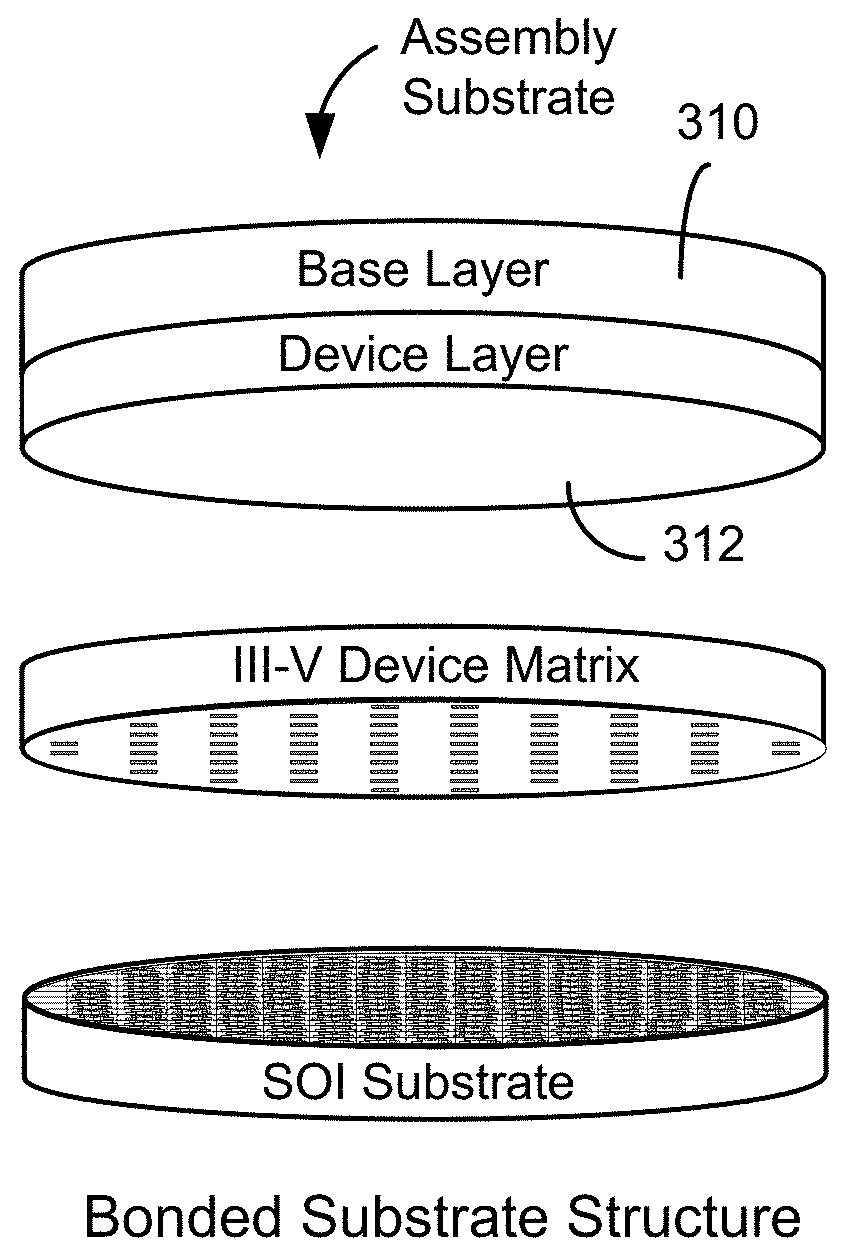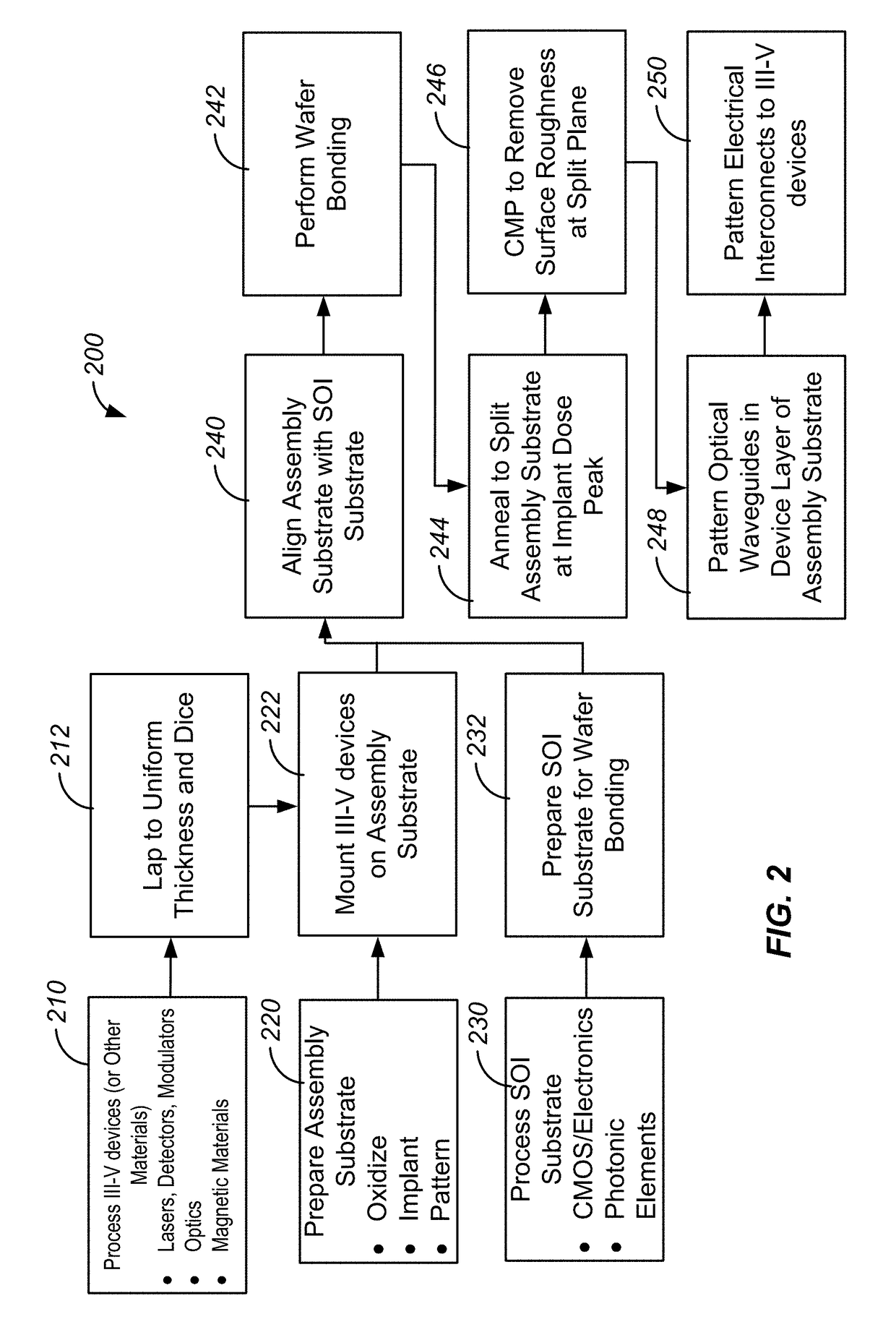Multilevel template assisted wafer bonding
a template and wafer technology, applied in the direction of instruments, semiconductor lasers, optical elements, etc., can solve the problems of limited integration of advanced electrical functions on silicon, inability to realize monolithically integrated opto-electronic integrated circuits, and inability to achieve light emission or optical amplification. achieve the effect of relaxing alignment tolerances and improving the cost structure of finished products
- Summary
- Abstract
- Description
- Claims
- Application Information
AI Technical Summary
Benefits of technology
Problems solved by technology
Method used
Image
Examples
Embodiment Construction
[0034]According to the present invention, methods and systems related to template assisted bonding of semiconductor wafers are provided. Merely by way of example, the invention has been applied to a method of bonding III-V dies (or device regions for more complex circuits) to a substrate at a wafer level using an assembly substrate (also referred to as a template wafer). The method and apparatus is applicable to a variety of semiconductor processing applications including wafer-scale processing of photonics integrating silicon-devices and silicon circuits integrating high-speed electronic functions with compound semiconductor devices.
[0035]The inventors have determined that the commercial significance of silicon photonics will be enhanced if cost and power can be reduced relative to discrete implementations while not sacrificing performance. According to embodiments of the present invention, performance parity is achieved by integrating III-V materials onto the silicon photonic wafe...
PUM
 Login to View More
Login to View More Abstract
Description
Claims
Application Information
 Login to View More
Login to View More - R&D
- Intellectual Property
- Life Sciences
- Materials
- Tech Scout
- Unparalleled Data Quality
- Higher Quality Content
- 60% Fewer Hallucinations
Browse by: Latest US Patents, China's latest patents, Technical Efficacy Thesaurus, Application Domain, Technology Topic, Popular Technical Reports.
© 2025 PatSnap. All rights reserved.Legal|Privacy policy|Modern Slavery Act Transparency Statement|Sitemap|About US| Contact US: help@patsnap.com



